I continue my sketches of the seventeenth century group pf mathematicians and astronomers associated with Nicolas-Claude Fabri de Peiresc (1580-1637) in Provence and Marin Mersenne (1588–1648) in Paris with Jean-Baptiste Morin (1583–1656), who was born in Villefranche-sur-Saône in the east of France.
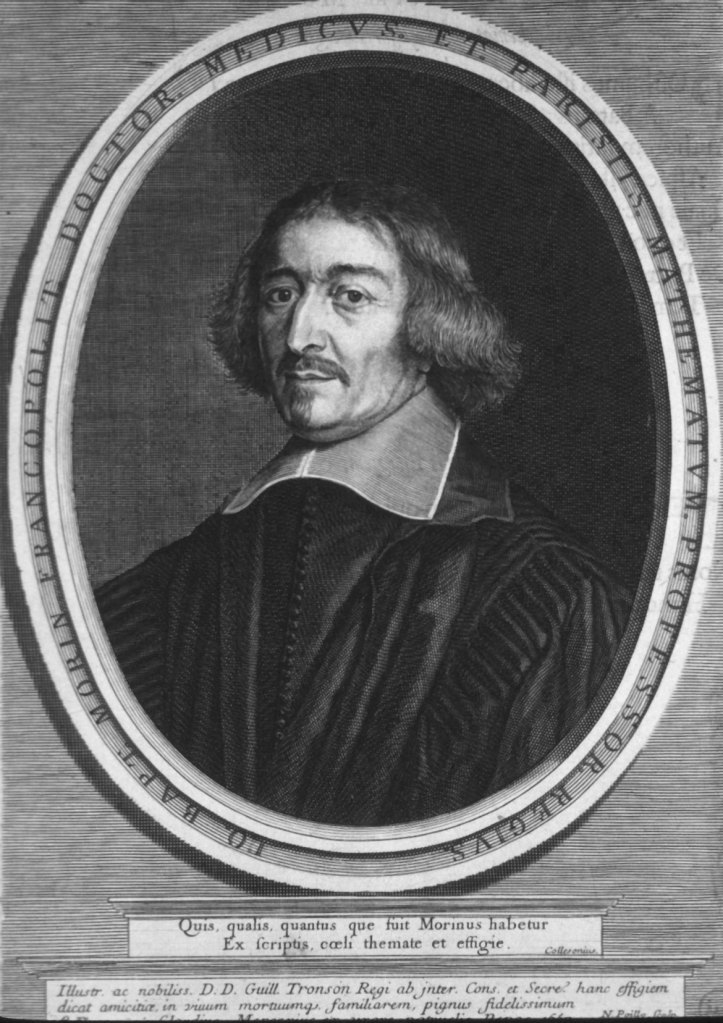
He seems to have come from an affluent family and at the age of sixteen he began his studies at the University of Aix-en-Provence. Here he resided in the house of the Provencal astronomer Joseph Gaultier de la Valette (1564–1647), vicar general of Aix and Peiresc’s observing partner. For the last two years of his time in Aix, the young Pierre Gassendi, also lived in Gaultier de la Valette’s house and the two became good friends and observing partners.
In 1611, Morin moved to the University of Avignon, where he studied medicine graduating MD in 1613. For the next eight years, until 1621, he was in the service of Claude Dormy (c.1562–1626) the Bishop of Boulogne, in Paris, who paid for him to travel extensively in Germany, Hungary and Transylvania to study the metal mining industry. As well as serving Dormy as physician, he almost certainly acted as his astrologer, this was still in the period when astro-medicine or iatromathematics was the mainstream medical theory.
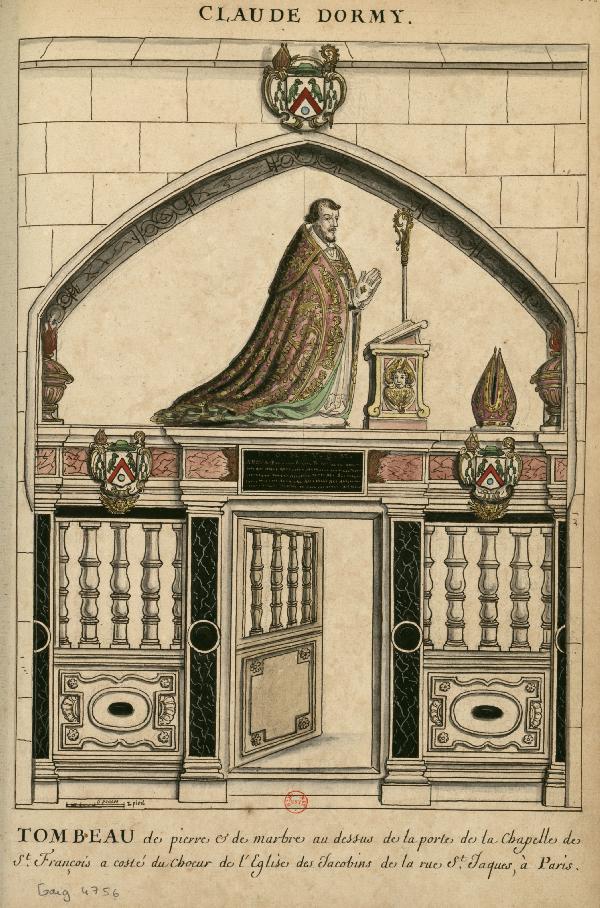
From 1621 to 1629 he served Philip IV, King of Spain, and Duke of Luxembourg, also probably as astrologer.
In 1630, he was indirectly asked by Marie de’ Medici, the Queen Mother, to cast a horoscope for her son, Louis XIII, who was seriously ill and whose doctor had predicted, on his own astrological reading, that he would die. Morin’s astrological analysis said that Louis would be severely ill but would survive. Luckily for Morin, his prediction proved accurate, and Marie de’ Medici used her influence to have him appointed professor for mathematics at the Collège Royal in Paris, a position he held until his death in 1656.
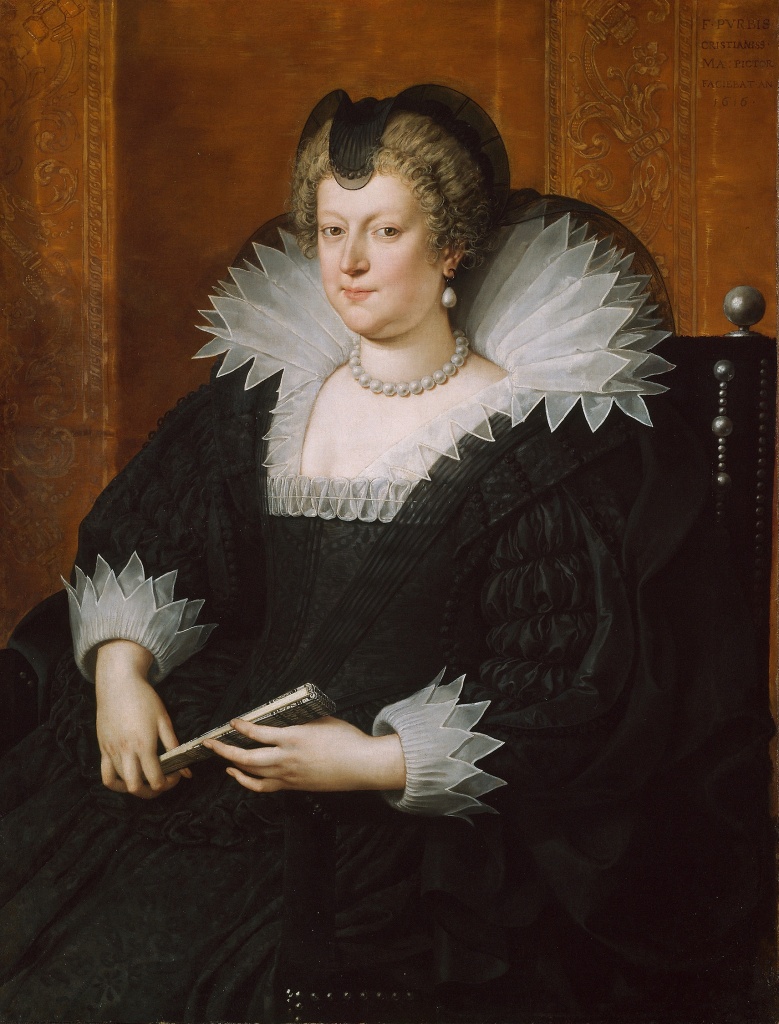
In Paris, Morin he took up his friendship with Gassendi from their mutual student days and even continued to make astronomical observations with him in the 1630s, at the same time becoming a member of the group around Mersenne. However, in my title I have labelled Morin the black sheep of the Provence-Paris group and if we turn to his scholarly activities, it is very clear why. Whereas Peiresc, Mersenne, Boulliau, and Gassendi were all to one degree or another supporters of the new scientific developments in the early seventeenth century, coming to reject Aristotelean philosophy and geocentric astronomy in favour of a heliocentric world view, Morin stayed staunchly conservative in his philosophy and his cosmology.
Already in 1624, Morin wrote and published a defence of Aristotle, and he remained an Aristotelian all of his life. He rejected heliocentricity and insisted that the Earth lies at the centre of the cosmos and does not move. Whereas the others in the group supported the ideas of Galileo and also tried to defend Galileo against the Catholic Church, Morin launched an open attack on Galileo and his ideas in 1630, continuing to attack him even after his trial and house arrest. In 1638, he also publicly attacked René Descartes and his philosophy, not critically like Gassendi, but across-the-board, without real justification. He famously wrote that he knew that Descartes philosophy was no good just by looking at him when they first met. This claim is typical of Morin’s character, he could, without prejudice, be best described as a belligerent malcontent. Over the years he managed to alienate himself from almost the entire Parisian scholarly community.
It would seem legitimate to ask, if Morin was so pig-headed and completely out of step with the developments and advances in science that were going on around him, and in which his friends were actively engaged, why bother with him at all? Morin distinguished himself in two areas, one scientific the other pseudo-scientific and it is to these that we now turn.
The scientific area in which made a mark was the determination of longitude. With European seamen venturing out into the deep sea for the first time, beginning at the end of the fifteenth century, navigation took on a new importance. If you are out in the middle of one of the Earth’s oceans, then being able to determine your exact position is an important necessity. Determining one’s latitude is a comparatively easy task. You need to determine local time, the position of the Sun, during the day, or the Pole Star, during the night and then make a comparatively easy trigonometrical calculation. Longitude is a much more difficult problem that relies on some method of determining time differences between one’s given position and some other fixed position. If one is one hour time difference west of Greenwich, say, then one is fifteen degrees of longitude west of Greenwich.
Finding a solution to this problem became an urgent task for all of the European sea going nations, including France, and several of them were offering substantial financial rewards for a usable solution. In 1634, Morin suggested a solution using the Moon as a clock. The method, called the lunar distance method or simply lunars, was not new and had already suggested by the Nürnberger mathematicus, Johannes Werner (1468–1522) in his Latin translation of Ptolemaeus’ Geographia, In Hoc Opere Haec Continentur Nova Translatio Primi Libri Geographicae Cl Ptolomaei, published in Nürnberg in 1514 and then discussed by Peter Apian (1495–1552) in his Cosmographicus liber, published in Landshut in 1524.
The lunar distance method relies on determining the position of the Moon relative to a given set of reference stars, a unique constellation for every part of the Moon’s orbit. Then using a set of tables to determine the timing of a given constellation for a given fixed point. Having determined one’s local time, it is then possible to calculate the time difference and thus the longitude. Because it is pulled hither and thither by both the Sun and the Earth the Moon’s orbit is extremely erratic and not the smooth ellipse suggested by Kepler’s three laws of planetary motion. This led to the realisation that compiling the tables to the necessary accuracy was beyond the capabilities of those sixteenth century astronomers and their comparatively primitive instruments, hence the method had not been realised. Another method that was under discussion was taking time with you in the form of an accurate clock, as first proposed by Gemma Frisius (1508–1555), Morin did not think much of this idea:
“I do not know if the Devil will succeed in making a longitude timekeeper but it is folly for man to try.”
Morin was well aware of the difficulties involved and suggested a comprehensive plan to overcome them. Eager to win the offered reward money, Morin put his proposal to Cardinal Richelieu (1585–1642), Chief Minister and most powerful man in France. Morin suggested improved astronomical instruments fitted out with vernier scales, a recent invention, and telescopic sights, also comparatively new, along with improvements in spherical trigonometry. He also suggested the construction of a national observatory, with the specific assignment of collected more accurate lunar data. Richelieu put Morin’s proposition to an expert commission consisting of Étienne Pascal (1588–1651), the father of Blaise, Pierre Hérigone (1580–1643), a Parisian mathematics teacher, and Claude Mydorge (1585–1647), optical physicist and geometer. This commission rejected Morin’s proposal as still not practical, resulting in a five year long dispute between Morin and the commission. It would be another century before Tobias Mayer (1723–1762) made the lunar distance method viable, basically following Morin’s plan.
Although his proposal was rejected, Morin did receive 2000 livre for his suggestion from Richelieu’s successor, Cardinal Mazarin (1602–1661) in 1645. Mazarin’s successor Jean-Baptiste Colbert (1619–1683) set up both the Académie des sciences in 1666 and the Paris Observatory in 1667, to work on the problem. This led, eventually to Charles II setting up the Royal Observatory in Greenwich, in 1675 for the same purpose.
Today, Morin is actually best known as an astrologer. The practice of astrology was still acceptable for mathematicians and astronomers during Morin’s lifetime, although it went into steep decline in the decades following his death. Although an avid astronomer, Peiresc appears to have had no interest in astrology. This is most obvious in his observation notes on the great comet of 1618. Comets were a central theme for astrologers, but Peiresc offers no astrological interpretation of the comet at all. Both Mersenne and Gassendi accepted the scientific status of astrology and make brief references to it in their published works, but neither of them appears to have practiced astrology. Boulliau also appear to have accepted astrology, as amongst his published translations of scientific texts from antiquity we can find Marcus Manilius’ Astronomicom (1655), an astrological poem written about 30 CE, and Ptolemaeus’ De judicandi jacultate (1667). Like Mersenne and Gassendi he appears not to have practiced astrology.
According to Morin’s own account, he initially thought little of astrology, but around the age of thirty he changed his mind and then spent ten years studying it in depth.
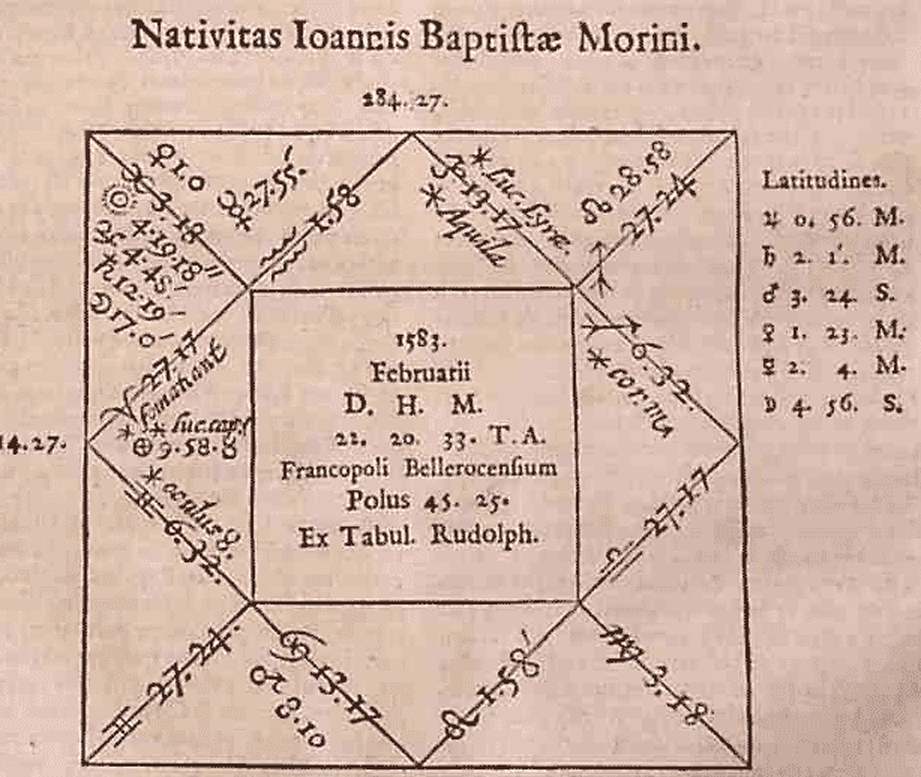
He then spent thirty years writing a total of twenty-six volumes on astrology that were published posthumously as one volume of 850 pages in Den Hague in 1661, as Astrologia Galllica (French Astrology). Like Regiomontanus, Tycho Brahe, and Kepler before him, he saw astrology as in need of reformation and himself as its anointed reformer.
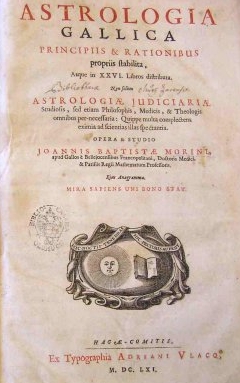
The first eight volumes of Astrologia Galllica hardly deal with astrology at all but lay down Morin’s philosophical and religious views on which he bases his astrology. The remaining eighteen volumes then deal with the various topics of astrology one by one. Central to his work is the concept of directio in interpreting horoscopes. This is a method of determining the times of major events in a subject’s life that are indicated in their birth horoscope. Originally, to be found in Ptolemaeus’ Tetrabiblos, it became very popular during the Renaissance. The standard text was Regiomontanus’ Tabulae Directionum, originally written in 1467, and large numbers of manuscripts can still be found in libraries and archives. It was published in print by Erhard Ratdolt in Augsburg in 1490 and went through eleven editions, the last being published in 1626. Aware of Kepler’s rejection of both the signs of the zodiac and the system of houses, Morin defends both of them.
Coming, as it did at a time when astrology was in decline as an accepted academic discipline, Morin’s Astrologia Galllica had very little impact in the seventeenth century, but surprisingly, in English translation, it enjoys a lot of popularity amongst modern astrologers.
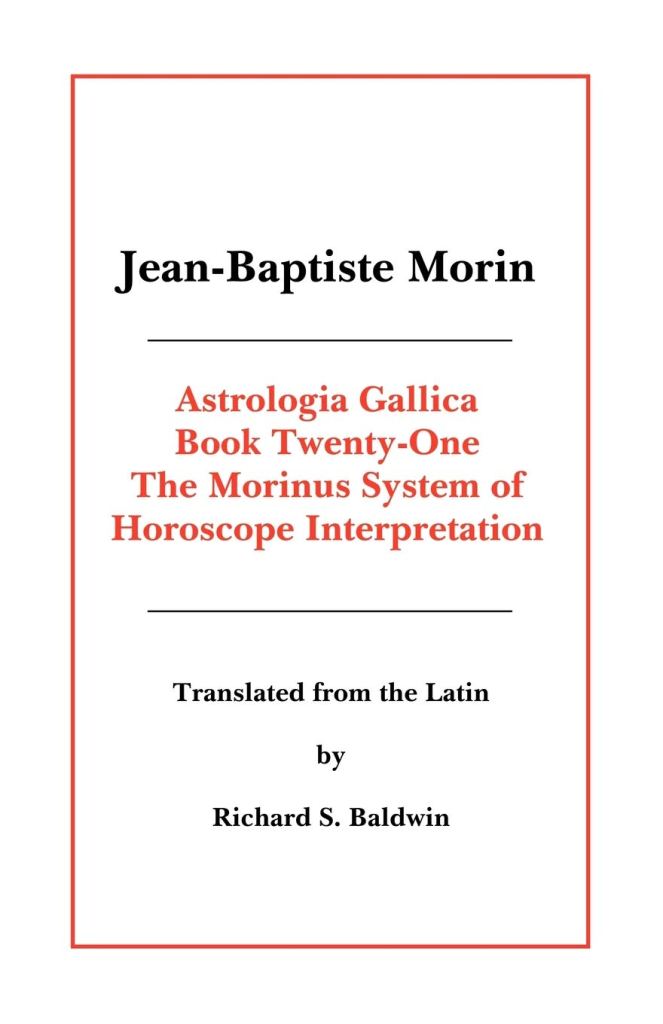
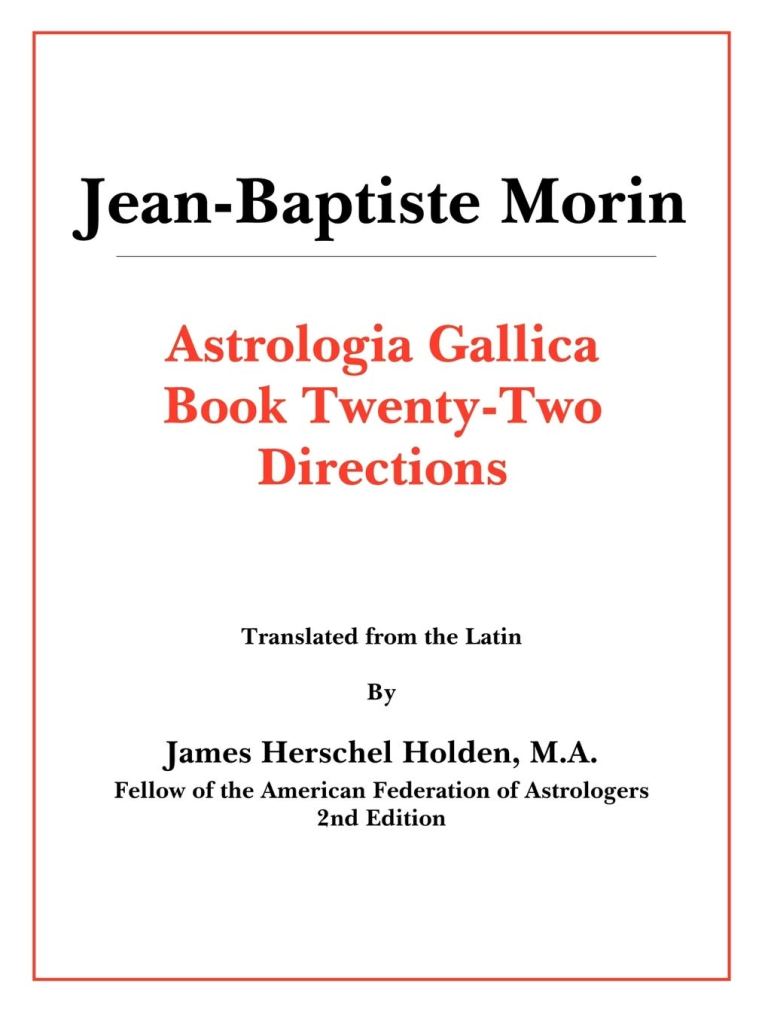
Morin was cantankerous and belligerent, which cost him most of his contacts with the contemporary scholars in Paris and his adherence to Aristotelian philosophy and a geocentric world view put him out of step with the rest of the Provence-Paris group, but he certainly didn’t suffer from a lack of belief in his own abilities as he tells us in this autobiographical quote:
“… I am excessively inclined to consider myself superior to others on account of my intellectual endowments and scientific attainments, and it is very difficult for me to struggle against this tendency, except when the realization of my sins troubles me, and I see myself a vile man and worthy of contempt. Because of all this my name has become famous throughout the world.”